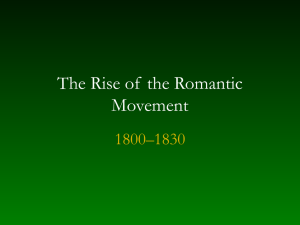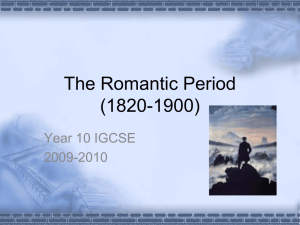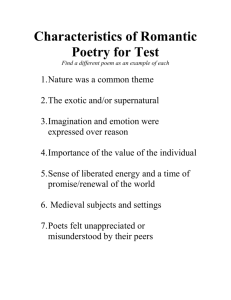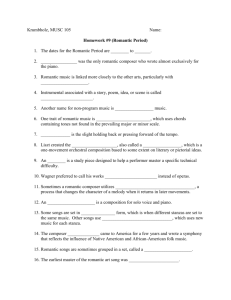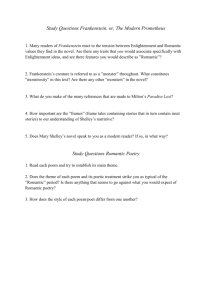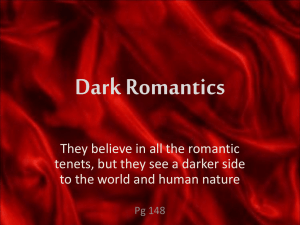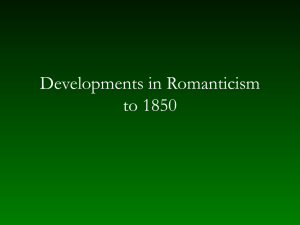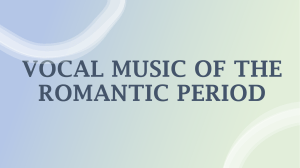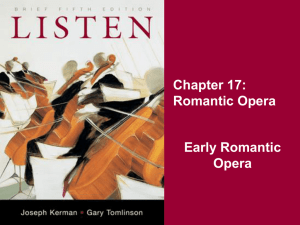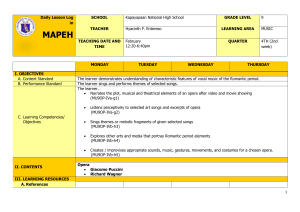Romantic Period 1820 – 1900 Society‐ rise of middle class: large concert halls, opera houses, large orchestras and
advertisement
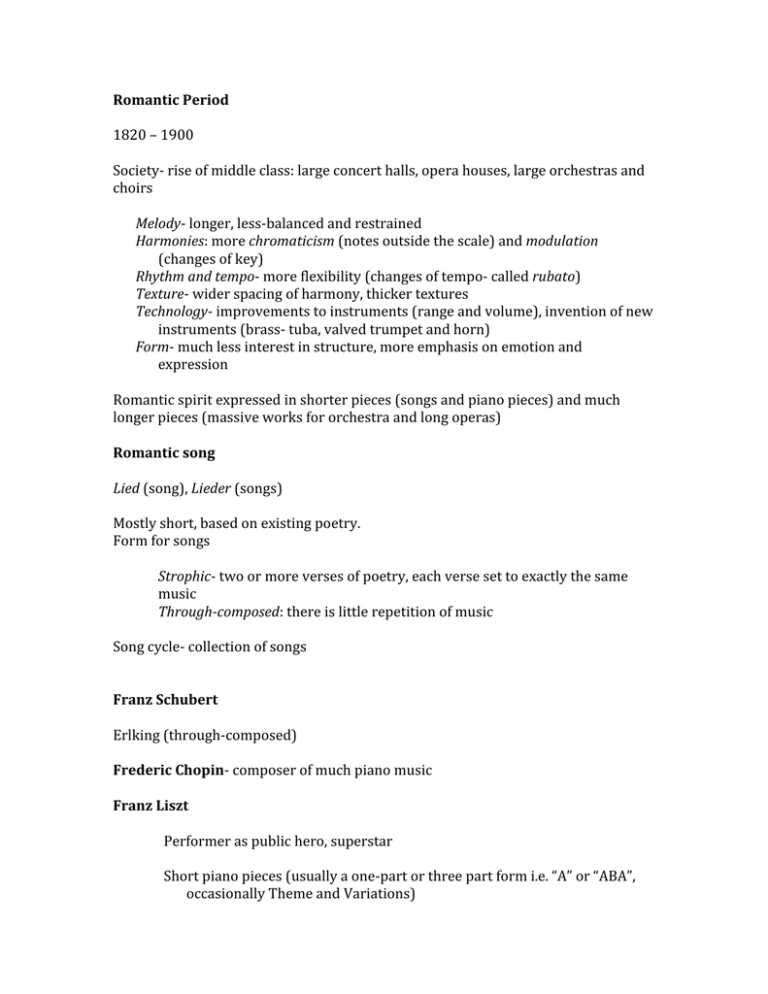
Romantic Period 1820 – 1900 Society‐ rise of middle class: large concert halls, opera houses, large orchestras and choirs Melody‐ longer, less‐balanced and restrained Harmonies: more chromaticism (notes outside the scale) and modulation (changes of key) Rhythm and tempo‐ more flexibility (changes of tempo‐ called rubato) Texture‐ wider spacing of harmony, thicker textures Technology‐ improvements to instruments (range and volume), invention of new instruments (brass‐ tuba, valved trumpet and horn) Form‐ much less interest in structure, more emphasis on emotion and expression Romantic spirit expressed in shorter pieces (songs and piano pieces) and much longer pieces (massive works for orchestra and long operas) Romantic song Lied (song), Lieder (songs) Mostly short, based on existing poetry. Form for songs Strophic‐ two or more verses of poetry, each verse set to exactly the same music Through­composed: there is little repetition of music Song cycle‐ collection of songs Franz Schubert Erlking (through‐composed) Frederic Chopin‐ composer of much piano music Franz Liszt Performer as public hero, superstar Short piano pieces (usually a one‐part or three part form i.e. “A” or “ABA”, occasionally Theme and Variations) Orchestral music for ballet‐ a series of short pieces (ballet movements), often ABA or Rondo Symphonies in the Romantic period Tchaikovsky‐ Russian composer Wrote 7 symphonies and a number of ballets Symphony No. 4, 4th movement (out of four)‐ form is like Classical sonata‐ allegro, themes are developed, but many musical characteristics are Romantic Hector Berlioz‐ French composer Symphonie Fantastique (“Fantasy Symphony”)‐ 5th movement (out of five) Program music‐ inspired by story, poem, painting, etc. Tone poem, Symphonic poem. (is not a poem) program work for orchestra, usually in one movement. The form is based on the story or the program. Nationalism‐ Smetana‐ Six tone poems called My Fatherland, one of which is called “Moldau.” Pictures at an Exhibition by Mussorgsky‐ each movement depicts a painting or design Romantic opera Public opera house all over Europe Serious opera (some comedies were written but the Romantic operas still performed today are mostly serious) Larger orchestras Breakdown of the separate number format Continuous flow of music (no separate recitatives) Recurrence of musical ideas Giuseppe Verdi “La donna e mobile” from Rigoletto Richard Wagner Brünhilde’s Immolation scene from Die Götterdämerung from Ring of the Nibelung Use of leitmotiv (musical theme associated with a person, place, object, concept, etc) Wrote his own words (libretto), supervised every other element of production Ring of the Nibelung (based on Norse mythology) Four operas Style and characteristics Huge orchestra Continuous flow of music Constant recurrence of musical material, especially the leitmotiv Giacomo Puccini La Bohème (The Bohemians) Like Wagner, continuous flow of music, recurrence of musical themes throughout opera, but in La Bohème Puccini focused on everyday, believable characters
